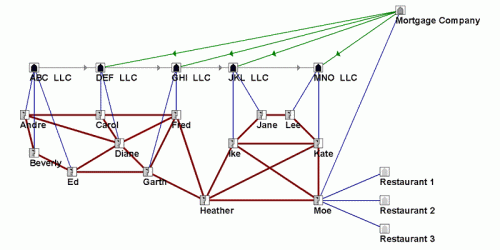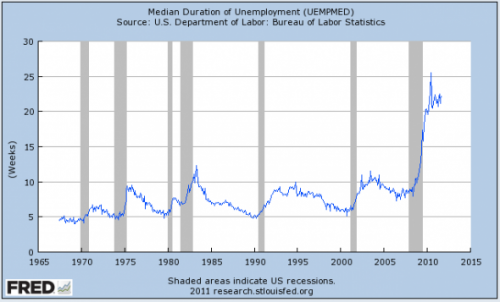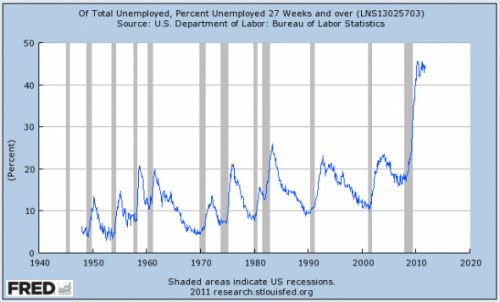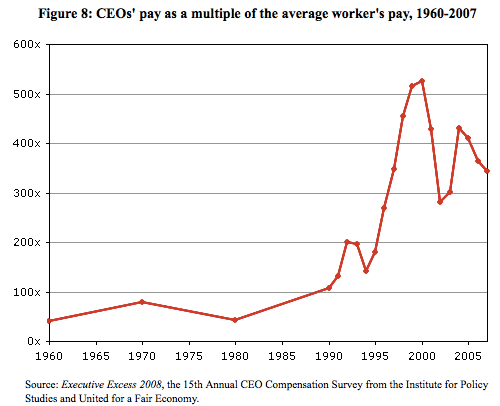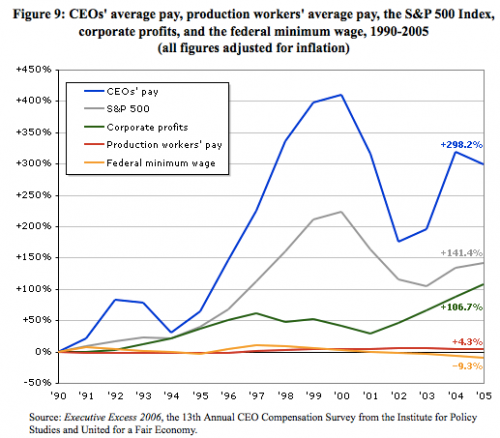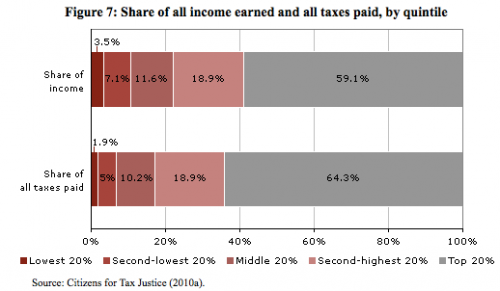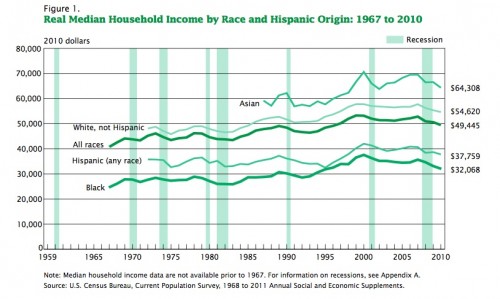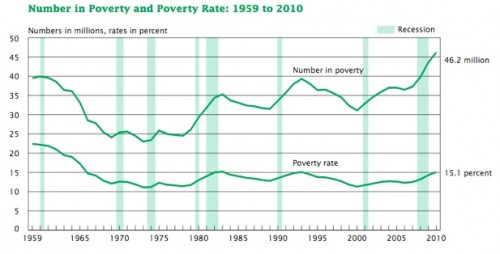Cross-posted at Reports from the Economic Front.
There is big trouble brewing in Europe. John Ross, in his blog Key Trends in the World Economy, highlights this brewing crisis in a series of charts, some of which I repost below.
This first chart shows the extent of the recovery from the recent economic crisis in the U.S., the EU, and Japan. While the U.S. GDP has finally regained its past business cycle peak, the same cannot be said for Europe (or Japan). As of the 3rd quarter 2011, EU GDP was still 1.7% below its previous business cycle peak. The Eurozone was 1.9% below.
Recent GDP estimates for the 4th quarter show European GDP once again contracting, which strongly suggests that the region is headed back into recession without having regained its previous business cycle peak. This development implies that Europe faces serious stagnationist pressures.
This chart looks at the growth record for the 5 largest European economies. Germany has regained its previous GDP peak. France is making progress toward that end. These two countries account for 36.2% of European GDP. However, things are quite different for the UK, Italy, and Spain. These three countries account for 34.7% of European GDP and not only do they each remain far below their respective previous GDP peaks, their economies are once again heading downward.
The third chart highlights the economic performance of the three countries which have received the most media attention because of fears that their governments will be unable to repay their respective debts. They are clearly in trouble, adding to the downward pressure on European GDP. However, despite all the attention paid to them, their combined economies are only one-eighth the size of the combined economies of the UK, Italy and Spain.
The next two charts highlight the fact that economic trends are also dire throughout much of Eastern Europe.
The take-away is that European economic problems are not limited to a few smaller countries. Some of the largest are also performing poorly and apparently headed back into recession without ever having regained their past business cycle peaks. It is hard to see Europe escaping recession. And it is hard to see the U.S., Asia, and Africa escaping the consequences.







